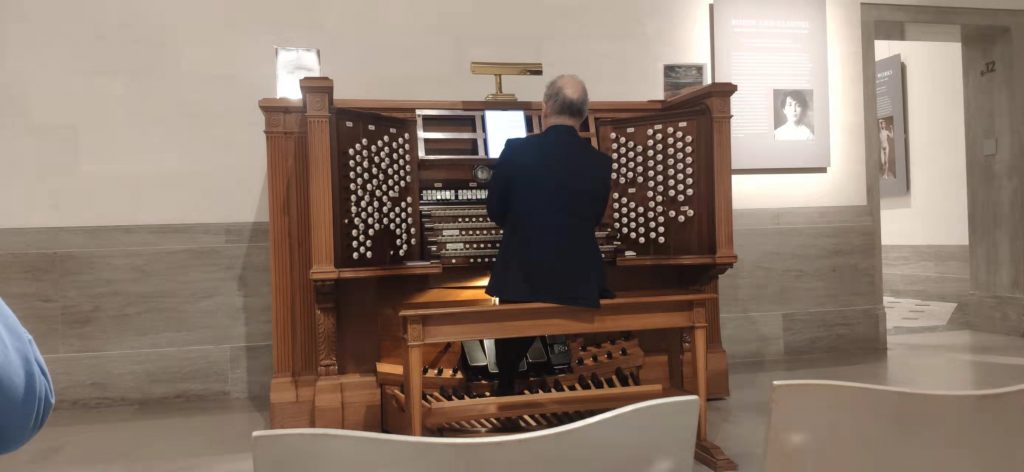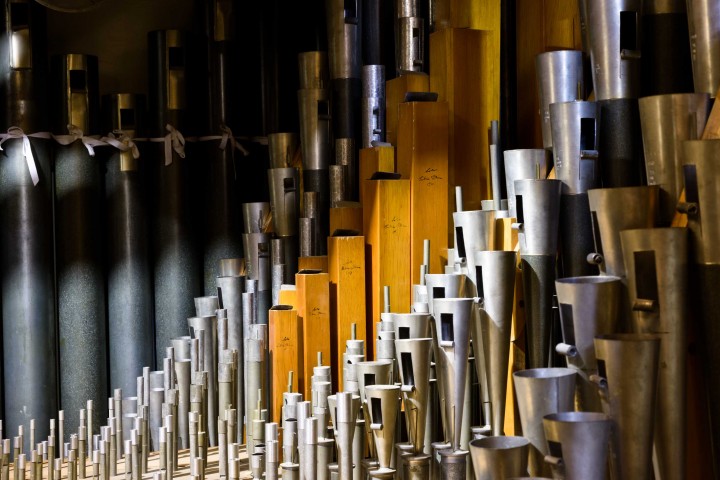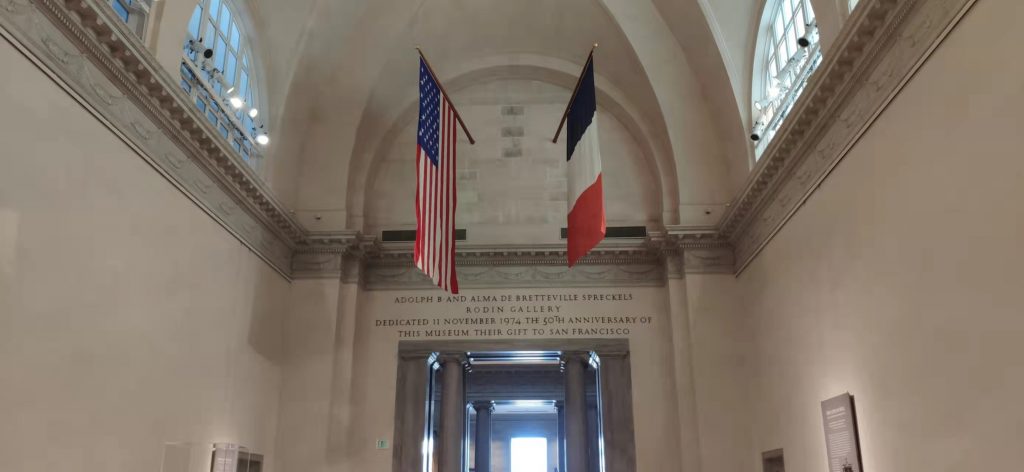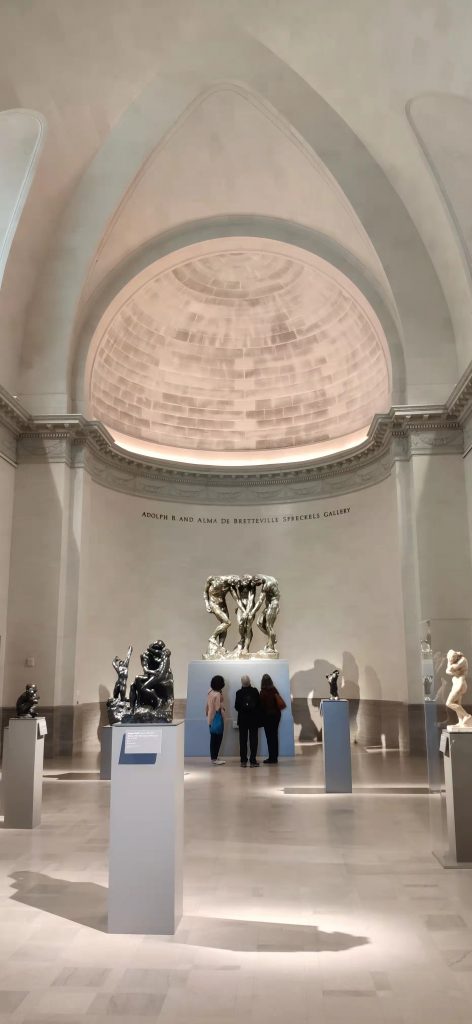
Around Christmas 2021 I attended an unexpected pipe organ concert while rroaming the galleries within the California Palace of the Legion of Honor–an art museum in San Francisco. IIt had been my first time at the museum and–around 3:30pm–I had noticed staff lining up rows of white plastic chairs in front of a wooden desk. We had just arrived in the building and little did I know what was about to happen. The desk opens up and reveals strange buttons, piano keys and foot pedals; it’s an organ. As it turns out, every Saturday at 4PM they hold a solo concert for the entire museum, free of charge.
Today I revisited for the sole purpose of getting another moment with the glorious pipe organ. As I sat in the white plastic chair, I closed my eyes and experienced the instrument once again but this time in thought.
I have had the fortunate upbringing of knowing the pipe organ from a very young age. I am from a family of clergy, and many Sundays of my youth were accompanied by instrument. My grandfather, a Carpatho-Russian Orthodox priest, had his own chief organist at his church. Looking back, I had never given it the instrument a second thought. Yet, in this museum, nearly 15 years later, the magic of the instrument has piqued my interest, as if hearing it for the first time.
To be fair, I must credit this to the Legion of Honor’s principal organist Jonathan Dimmock (seen in the video above). Dimmock can be found on most Saturdays behind the 98 year old instrument, performing and sharing the knowledge of machine with an infectious personality for the craft. From him I have learned the following facts:
The Spreckels Organ was built in 1924 in tandem with the construction of the Legion of Honor building, itself. With 4526 pipes seamlessly integrated within the structure of the museum, one can enjoy the music from nearly any gallery. He kindly reminds us that we should walk among the artwork as the organ is a companion to the viewing process. None of us move in the audience as we wait for him to resume playing.
Before he sits, he explains that the organ’s pipes range from a half an inch, he puts up his pinky finger, to 32 feet and large enough for him to climb through. The joke makes the room laugh. The larger ones, he explains, require an engine the size of a jet engine to provide enough enough pressure. This time giving us a more gruesome image: “If you were to put your hand on top of the hole, it would blow a hole straight through your hand.” I later find out through their website, “Three high pressure turbines with a total of 48 horsepower provide the main wind supply for the organ’s pneumatic system” — I trust his declaration.

He plays a French song I am unfamiliar with, in peace I close my eyes again. We are all surrounded by Rodin sculptures, yet our eyes dare not roam the room. He hits a low note and bellowing sound shakes the foundation of the building and captivates us all. He finishes and we all clap in awe. He stands up, takes a bow and quickly returns to educating us on the instrument. He points to a curved corner ceiling and then to an entrance wall with an American and French flag. He explains that these stone “walls” are not what they seem.

Taken by KITE0080 1.22.2022 
Taken by KITE0080 1.22.2022
The walls are cloth expertly designed to seamlessly blend in the buildings architecture. Where these cloth structures exist, the pipes sing throughout the museum. Instead of displaying the pipes, they are camouflaged behind multiple sections of the building in order to give the listening experience a fuller sound. No matter how much I stare, I can not understand how cloth could wrap in such seamless design and molding. This unveiled discovery truly intrigues me the most.
Throughout the entire concert, I feel an immense connection to the vibrations in the room — Nearly to the point that my scalp tingles to various tones. The lowest sounds shake the room while the highs echo from the right. In one song he triggers a percussion to the melody, in another, the sound of English horns, clarinets, French horns, and oboes find their way seamlessly. With Dimmock controlling the instrument with both feet, and both hands over four layers of piano keys, he commands a mastery over his craft. We cheer again and he takes a modest bow, how grand of an experience I wish most in the room wouldn’t take for granted.
The playing the pipe organ is probably a dying craft. The golden age of the pipe organ was during the Baroque period or four centuries back. The long held tradition of the instrument accompanying church service has nearly died out as well. Through the process of writing this, I found an article questioning if organ music is killing church service. Even in my grandfather’s old church, they rarely play the instrument, if at all. I wouldn’t be surprised if the old hands have died off, leaving the instrument to detune and be pushed to the side for a more vocal service.
It wasn’t until I had the opportunity to hear the instrument in a silent room among Rodin and the tall ceilings of a museum that I had found a new love for something I had always linked to Castlevania OSTs. It’s a precious experience that one may never find themselves able to attend. I worry in time only a small pool of organists will exist and at what point does it go the way of the Asor? It doesn’t have to be the biggest in the world, but do yourself a favor and give the pipe organ a listen, even if it’s at a local church, the experience is worth it. Lest we let the pipe organ drift into obscurity, among recordings lost in the stacks of a music store.

